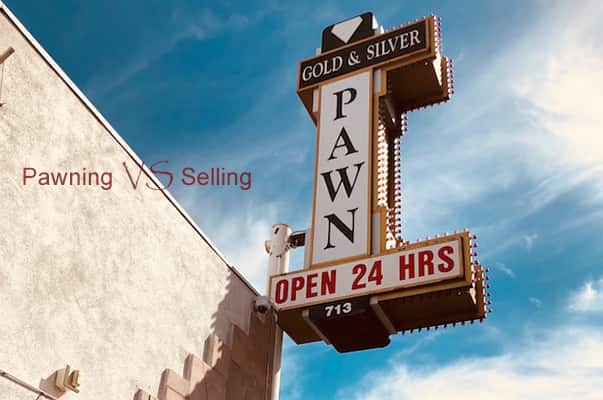When it comes to leasing, understanding the roles and responsibilities of the lessor and lessee is essential. Whether you’re entering into a lease agreement for real estate, equipment, or other assets, knowing the distinctions between these two parties can help you navigate the process more effectively. This guide will break down the key differences, roles, benefits, and accounting treatments for lessors and lessees, providing a comprehensive overview of these critical terms.
Who is a Lessor?
A lessor is the owner of an asset who grants the right to use that asset to another party, known as the lessee, in exchange for periodic payments. The lessor retains ownership of the asset throughout the lease term and benefits from the income generated through the lease payments.
Key Characteristics of a Lessor:
- Ownership: The lessor retains legal ownership of the asset.
- Income Generation: The lessor earns rental income from the lessee.
- Risk Management: The lessor mitigates risks related to asset ownership, such as maintenance and depreciation.
- Types of Assets: Assets leased can include real estate, vehicles, equipment, and intangible assets like trademarks.
Examples of Lessors:
- A landlord renting out an apartment.
- A company leasing machinery to another business.
- A car dealership providing vehicles on lease.
Rights of a Lessor:
- Ownership Rights: While the lessee uses the asset, the lessor retains ownership and can reclaim the asset at the end of the lease term.
- Periodic Payments: The lessor is entitled to receive regular lease payments from the lessee.
- Inspection Rights: The lessor can inspect the asset to ensure it is being properly maintained.
- Reclamation of Asset: If the lessee fails to comply with the lease terms, the lessor can reclaim the asset.
Who is a Lessee?
A lessee is an individual or entity that obtains the right to use an asset owned by the lessor for a specified period in exchange for periodic payments. The lessee does not own the asset but has the right to use it according to the terms of the lease agreement.
Key Characteristics of a Lessee:
- Usage Rights: The lessee has the right to use the asset for the lease term.
- Payment Obligations: The lessee makes regular payments to the lessor.
- Responsibility for Maintenance: Depending on the lease terms, the lessee may be responsible for maintaining the asset.
- Temporary Possession: The lessee has possession of the asset for the duration of the lease but does not own it.
Examples of Lessees:
- A tenant renting an apartment.
- A business leasing office space or equipment.
- An individual leasing a car.
Rights of a Lessee:
- Usage Rights: The lessee can use the asset as per the lease agreement.
- Safe Condition: The lessee has the right to receive the asset in a safe and usable condition.
- Request for Repairs: The lessee can request the lessor to make necessary repairs if the asset is damaged through no fault of their own.
- Termination of Lease: The lessee can terminate the lease under specific conditions outlined in the lease agreement.
Key Differences Between Lessor and Lessee
- Ownership and Possession:
- Lessor: Owns the asset but transfers possession to the lessee during the lease term.
- Lessee: Has possession of the asset but does not own it.
- Income and Expense:
- Lessor: Receives income through lease payments.
- Lessee: Incurs an expense in the form of lease payments.
- Responsibilities:
- Lessor: Responsible for major repairs and maintenance unless otherwise stated.
- Lessee: Typically responsible for routine maintenance and minor repairs.
- Risk and Reward:
- Lessor: Retains the risks and rewards of ownership.
- Lessee: Benefits from the use of the asset without bearing the risks of ownership.
- Taxation:
- Lessor: May be responsible for property taxes and other related taxes.
- Lessee: Generally not responsible for taxes on the asset, except for use or consumption taxes.
Types of Lease Agreements for Lessor and Lessee
- Operating Lease:
- The lessor retains ownership and bears the risks and rewards of the asset.
- The lease payments are considered operational expenses for the lessee.
- Finance (Capital) Lease:
- The lessee assumes the risks and rewards of ownership, even though legal title may not be transferred.
- The asset is recorded on the lessee’s balance sheet, and lease payments are treated as both interest expense and principal repayment.
- Sale and Leaseback:
- The owner of an asset sells it and immediately leases it back from the buyer.
- The seller becomes the lessee, and the buyer becomes the lessor.
Accounting for Leases: Lessor and Lessee
- For Lessors:
- Operating Leases: The lessor continues to recognize the leased asset on their balance sheet and records lease income on a straight-line basis over the lease term.
- Finance Leases: The lessor recognizes a lease receivable and removes the asset from the balance sheet, recognizing interest income over the lease term.
- For Lessees:
- Right-of-Use Asset: The lessee recognizes a right-of-use asset and a lease liability on the balance sheet at the commencement of the lease.
- Lease Liability: Represents the obligation to make lease payments, initially measured at the present value of lease payments.
- Amortization: The right-of-use asset is amortized over the lease term, and interest on the lease liability is recognized separately.
Benefits for Both Parties Lessor and Lessee
- Benefits for Lessors:
- Steady Income: Generates regular income from lease payments.
- Asset Utilization: Ensures that assets are utilized and not left idle.
- Risk Mitigation: Retains ownership and can reclaim the asset if lease terms are violated.
- Portfolio Diversification: Leasing assets across different sectors can diversify income sources and reduce risk.
- Benefits for Lessees:
- Cost Efficiency: Access to high-value assets without the need for large upfront capital.
- Flexibility: Ability to use assets without long-term ownership commitments.
- Up-to-date Technology: Opportunity to use the latest technology and equipment without owning them.
- Operational Efficiency: Simplified asset management and reduced maintenance responsibilities.
Finishing Thoughts
Understanding the difference between a lessor and a lessee is crucial for anyone involved in leasing agreements. The lessor owns the asset and benefits from the income generated through leasing, while the lessee gains the right to use the asset without the financial burden of ownership. Each party has specific rights, responsibilities, and benefits, making lease agreements a viable option for various personal and business needs. By knowing these distinctions, you can make informed decisions and ensure that your lease agreements are beneficial and compliant with relevant accounting standards.
This guide should provide you with a clear understanding of the roles, benefits, and accounting treatments of lessors and lessees, ensuring you can navigate your next lease agreement with confidence.





